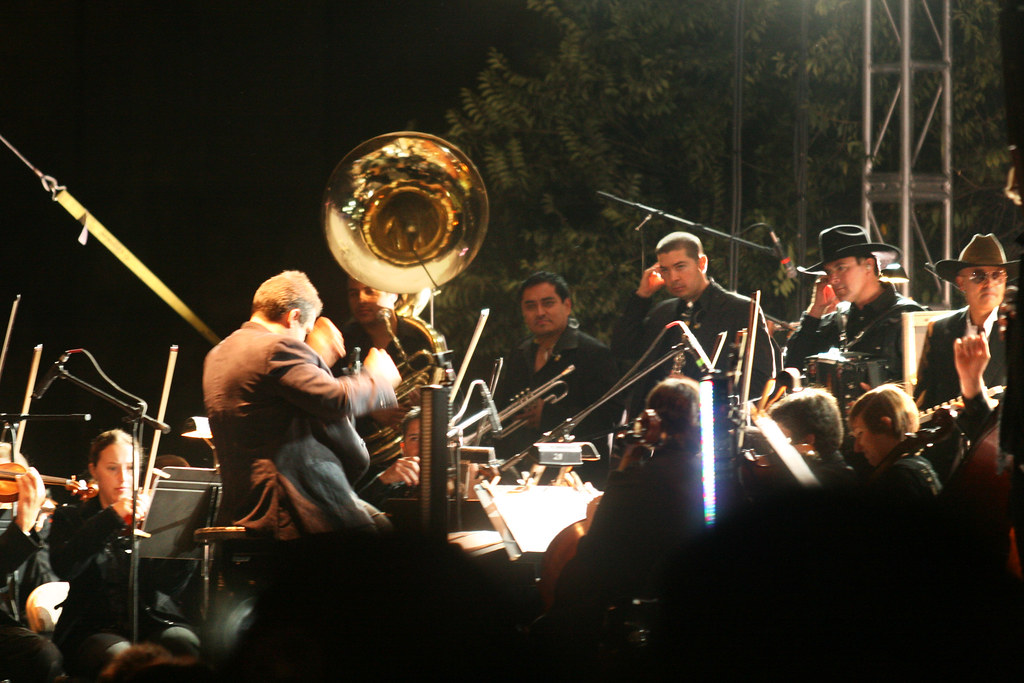from the OBC gallery
Entijuanarte always manages to pull off something iconic. This year’s memorable event was an open-air concert combining the efforts of Tijuana’s most respectable musicians with those of Tijuana’s most autochthonous musicians and ending with more than twenty-five thousand spectators shouting “Tijuana! Tijuana! Tijuana!”
The event was memorable because of the performance’s emotional effect. The audience, after having to endure so much depressing and uninformed media coverage of Tijuana, found their civic pride validated by a stage full of photographic imagery and seriously ebullient musicians. It was also an historically memorable event because this might very well be the first time orchestral performers and popular composition collaborated truly as equals.
entijuanarte in the morning
The orchestra at this performance is the Orquesta de Baja California, which was formed in 1990 as a chamber ensemble. Its core of first-chair strings were émigrés from Soviet orchestras; talented local musicians filled the rest of the regular chairs and ringers were brought in from UCSD as the repertoire required. Since then, and in spite of weak governmental funding, the orchestra has toured internationally, produced eleven recordings, and maintains a composer-in-residence (Alberto Núñez Palacio, who prepared the arrangements for the entijuanarte performance).
The post-modern pop musicians at this performance are Bostich and Fussible of the Nortec Collective. Bostich’s first commercial recordings date from 1992, two pieces on the “San Diego and Tijuana Industrial/TekNo Compilation” Música Contaminante: Below San Onofre
Previous attempts to meld pop music and orchestras have had indifferent success. The Moody Blues became famous in 1967 for taking orchestral sweeting to a new level with Days of Future Past
The entijuanarte concert was entirely different, thanks in great part to the arrangements. Instead of acting like a cast of thousands or as a self-conscious anachronism, the orchestra created an extra dimension in the nortec pieces. There was nothing artificial or forced in the interactions. The orchestrations were so well-received that, right after the concert, the nortecos and the OBC started work on an entire album of the stuff.
The event has been chronicled throughout the blogosphere. Here are three of the most interesting items.
The Orquesta de Baja California’s Flash gallery of the performance.
Video interview in English of Bostich and Fussible from PRI’s The World.






0 comments:
Post a Comment